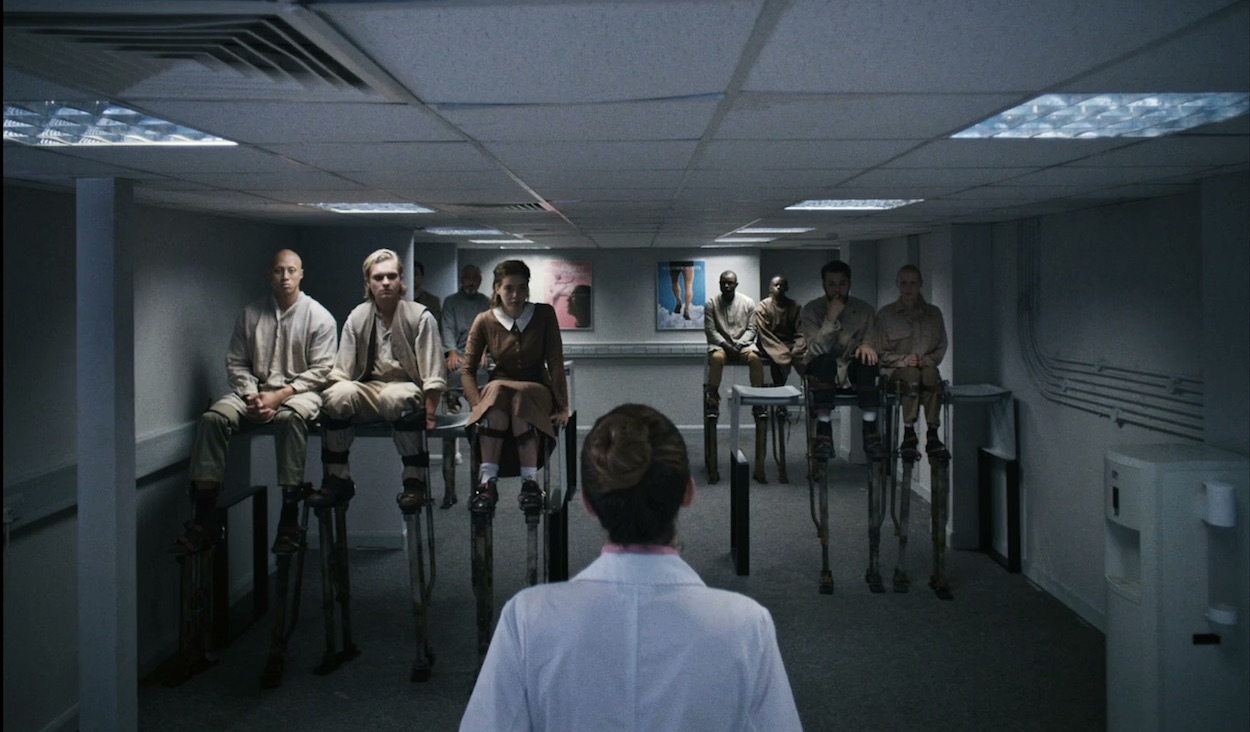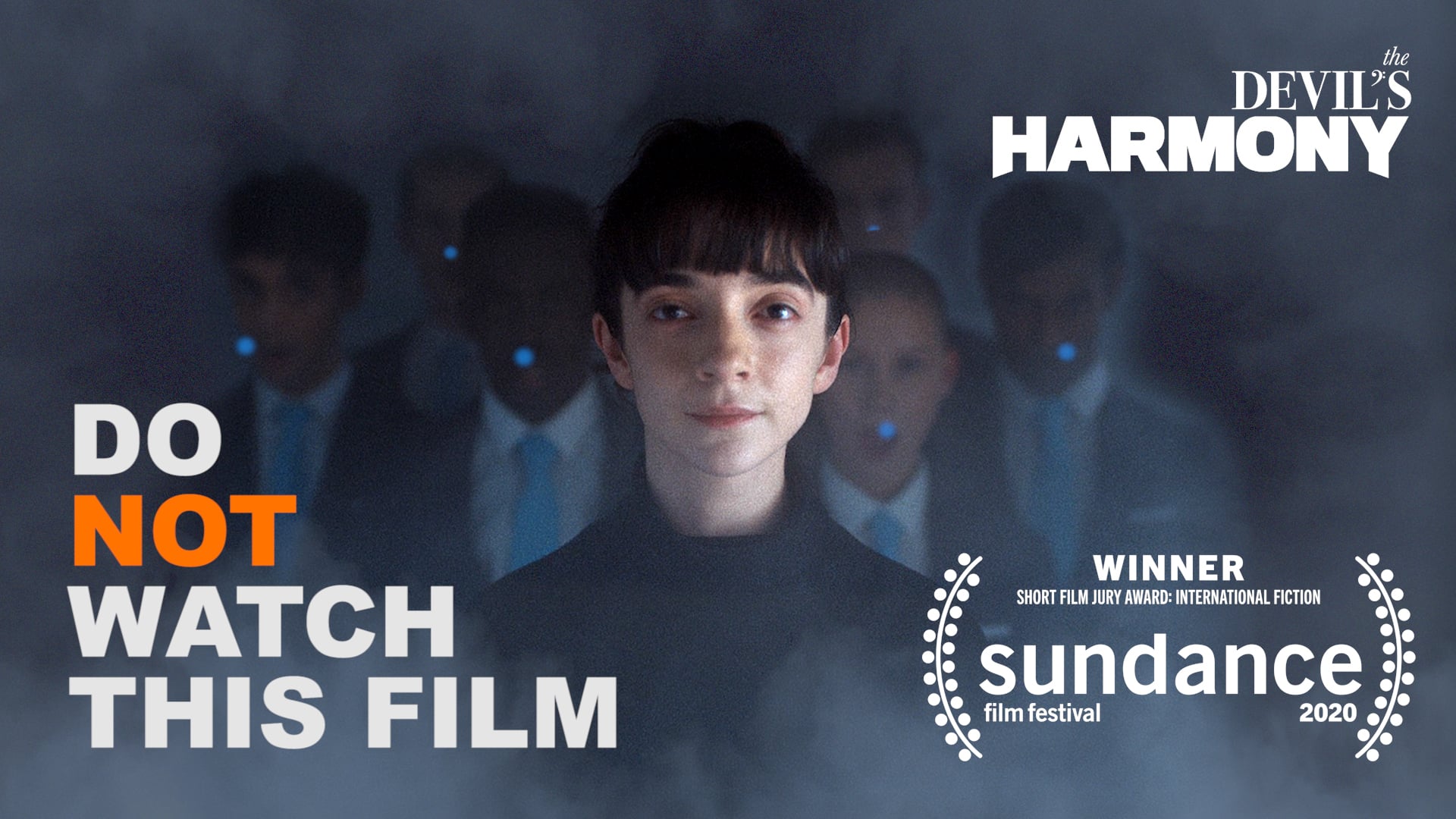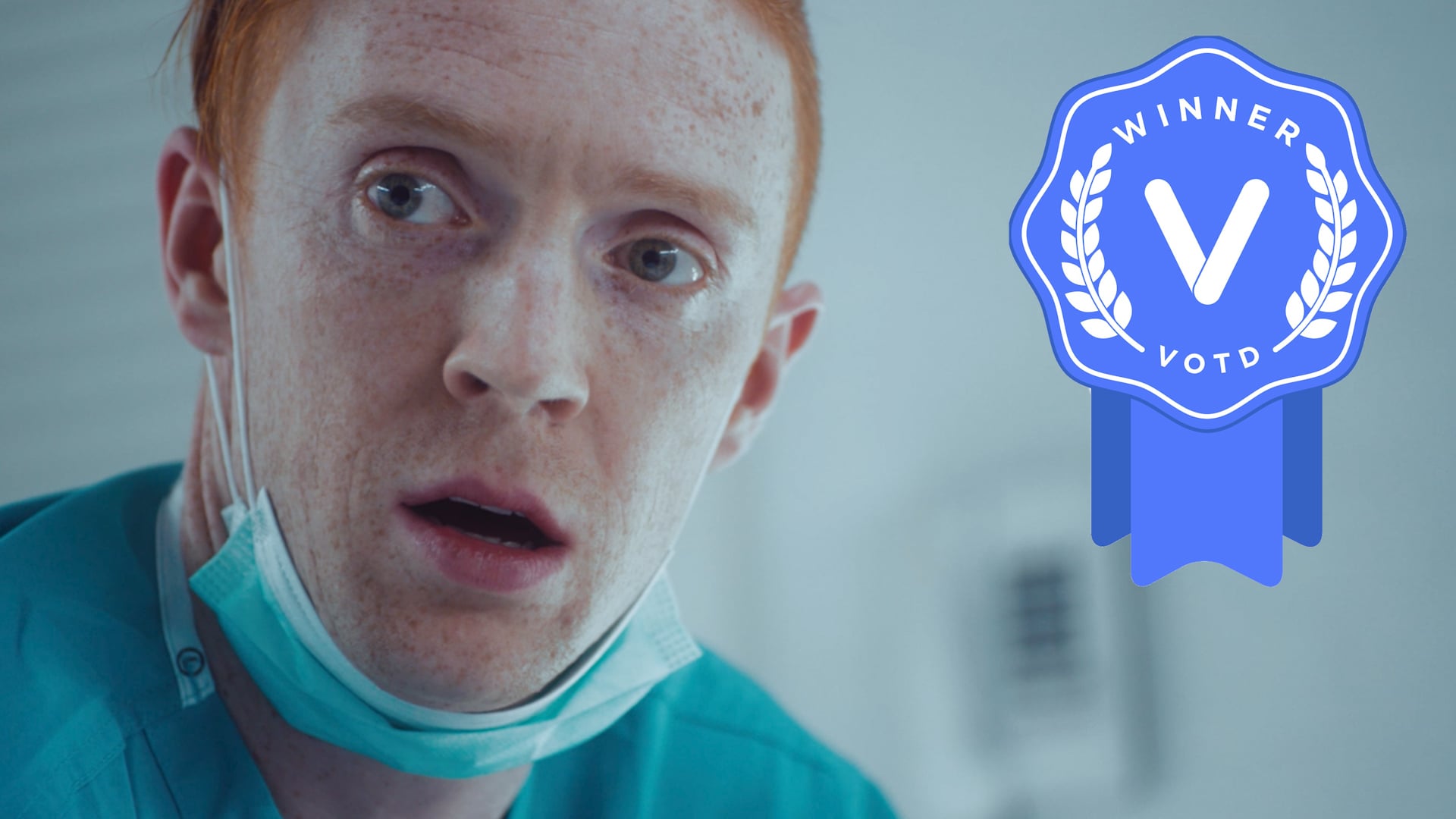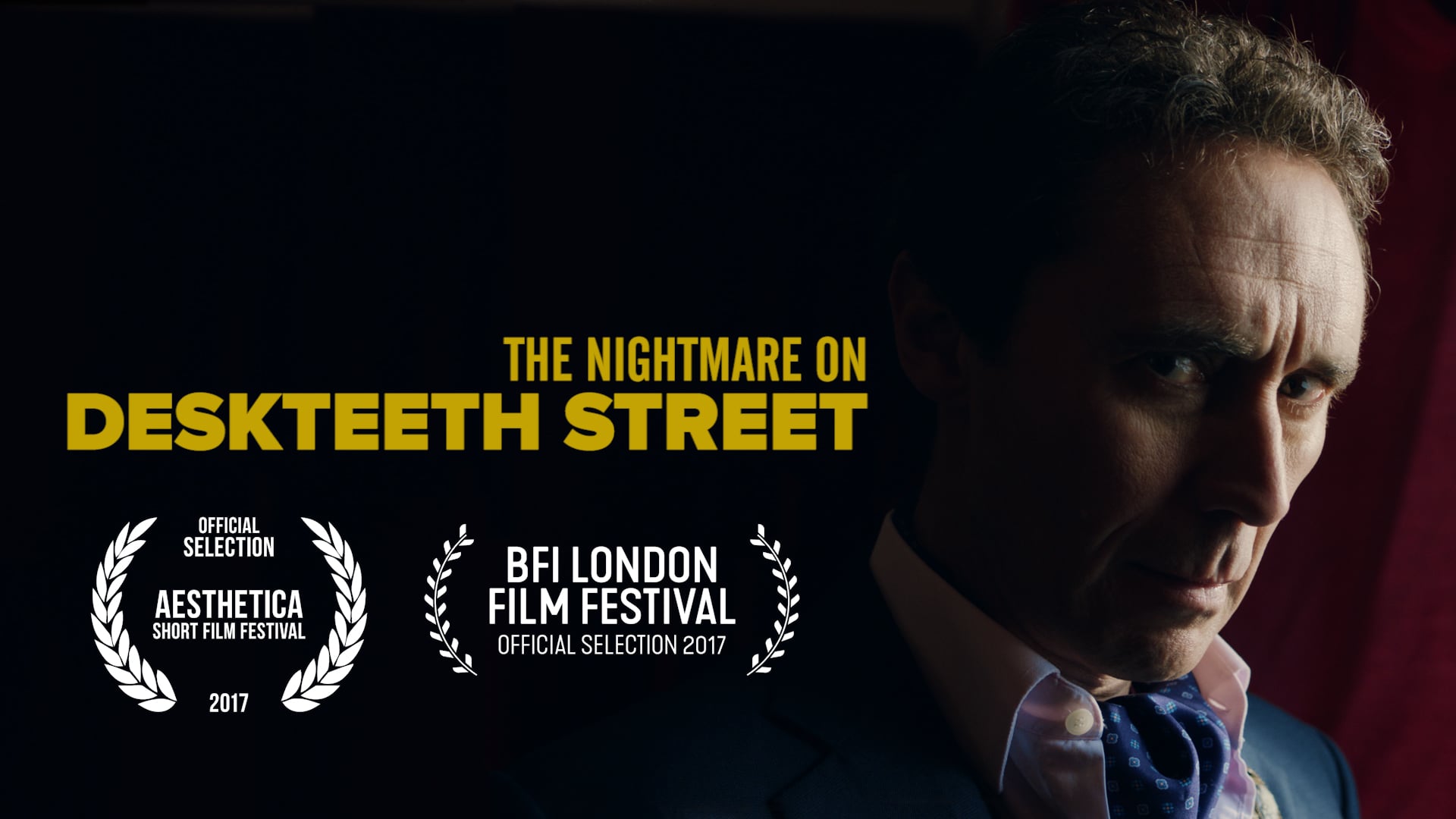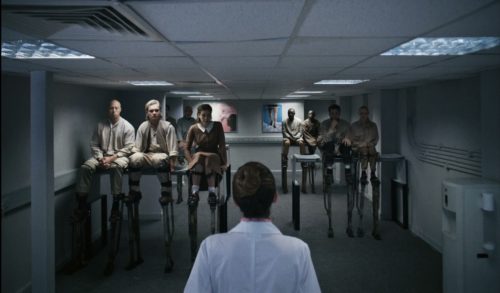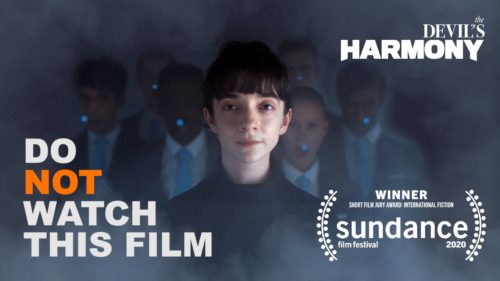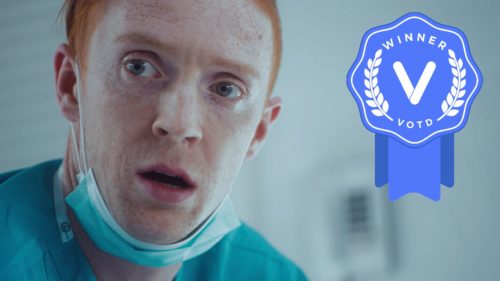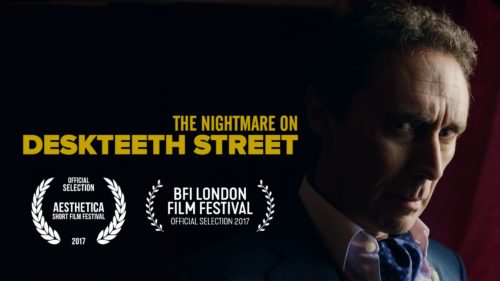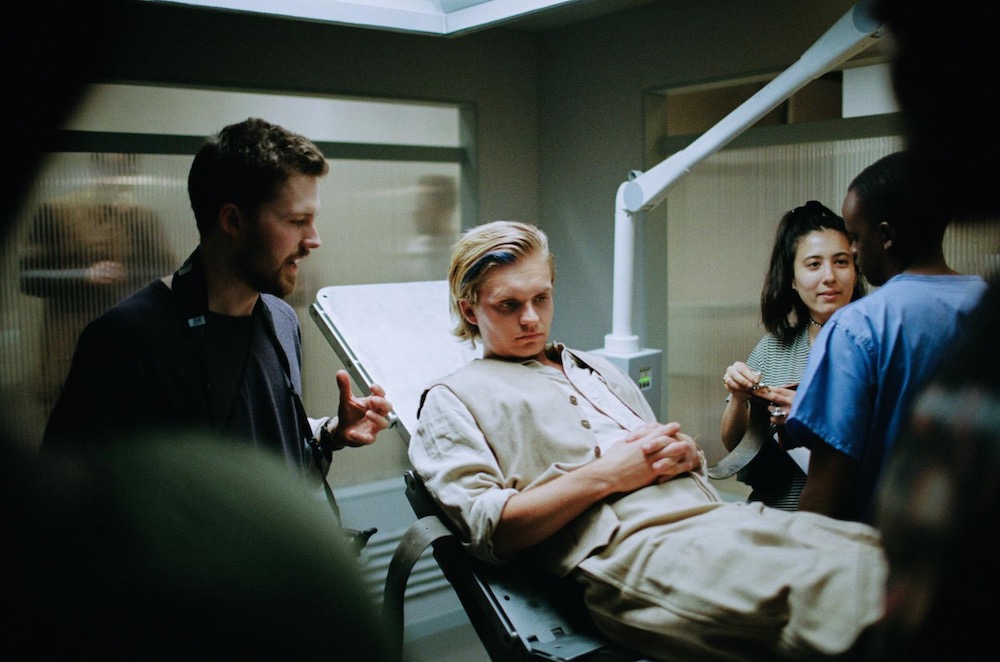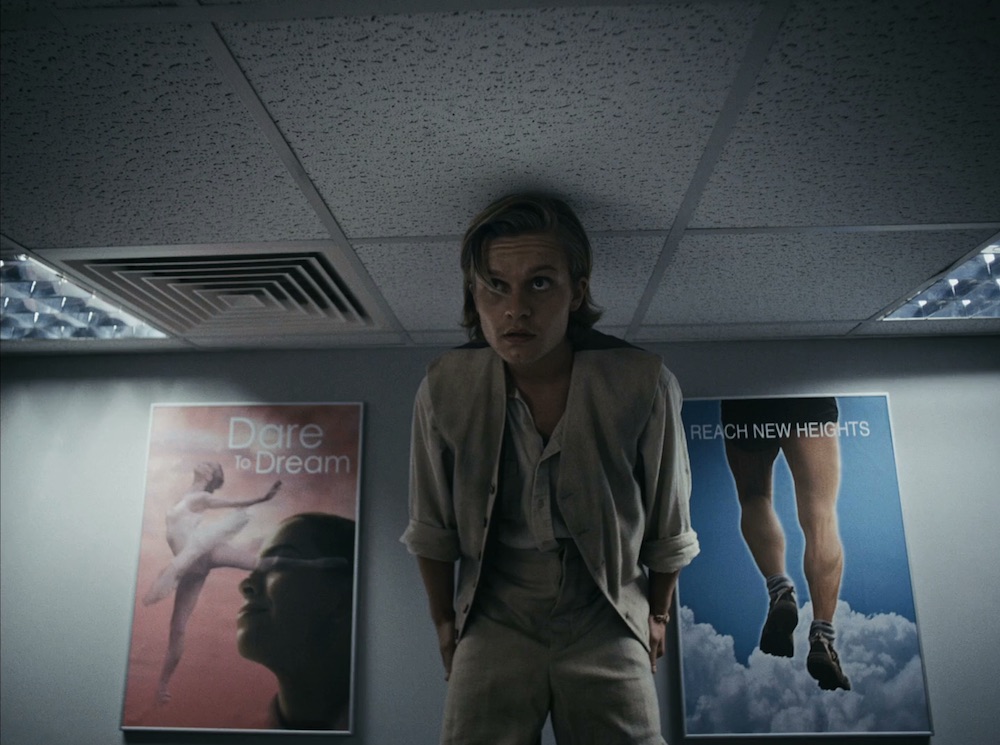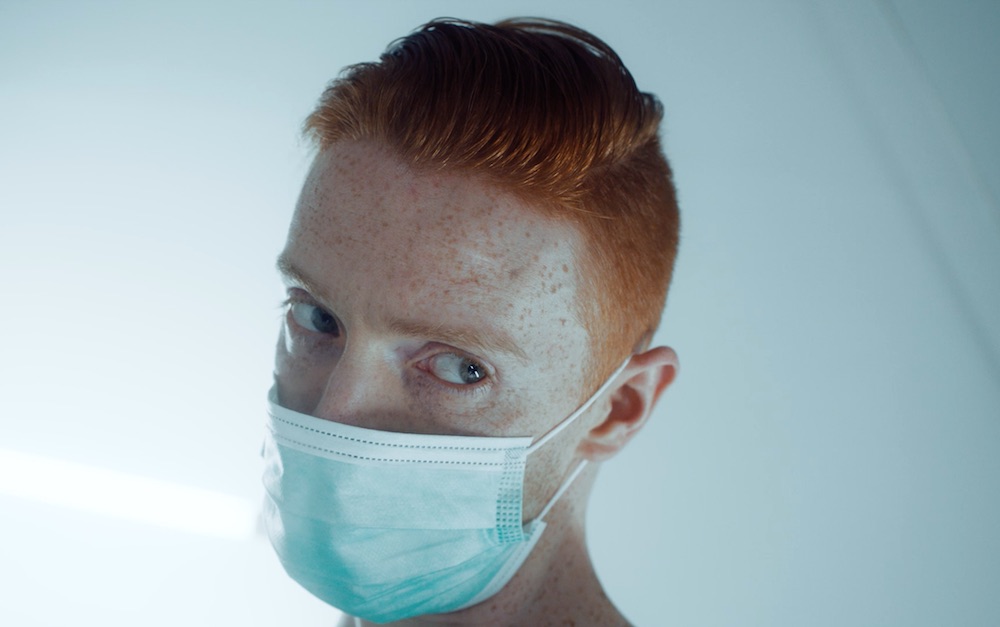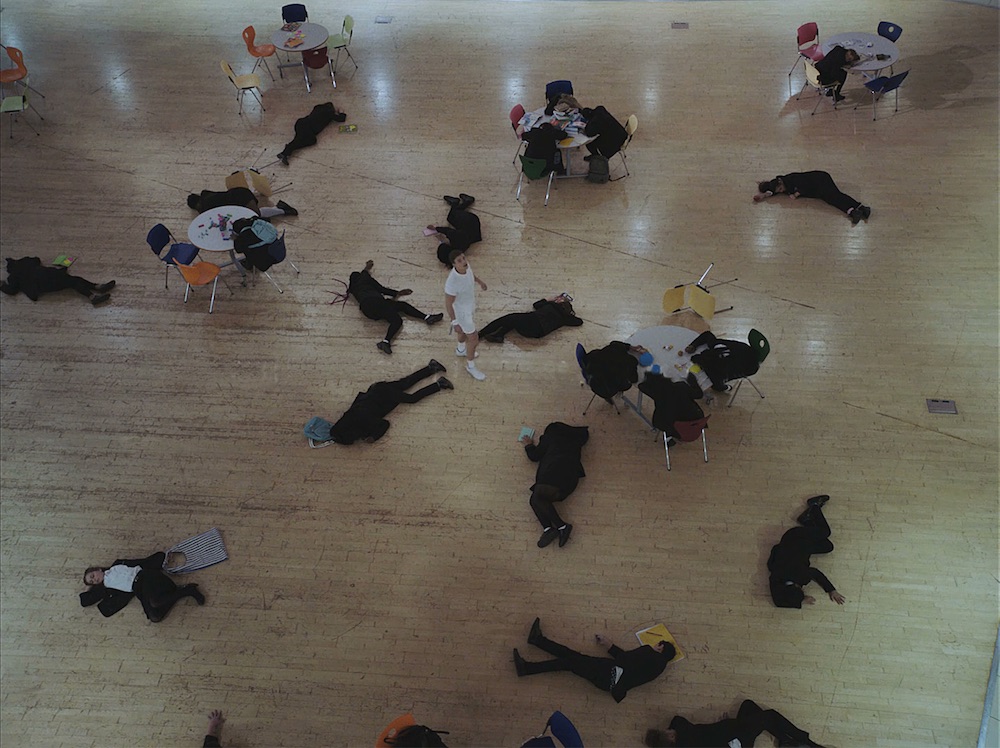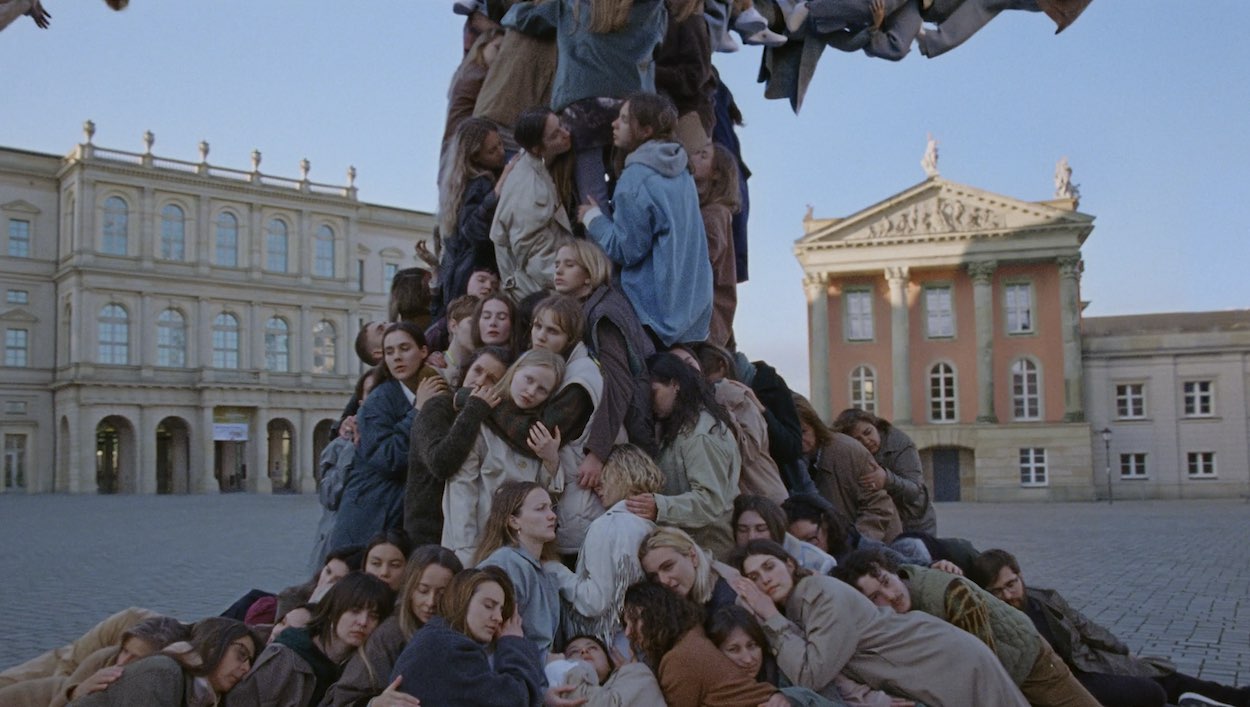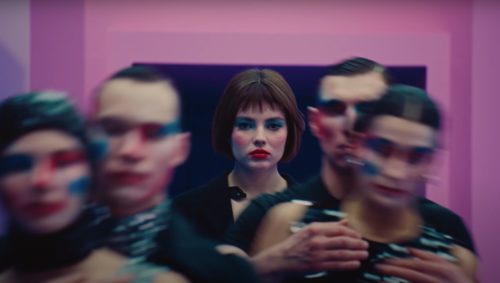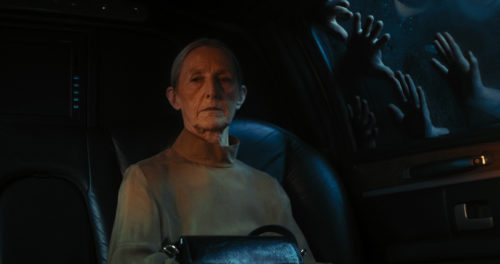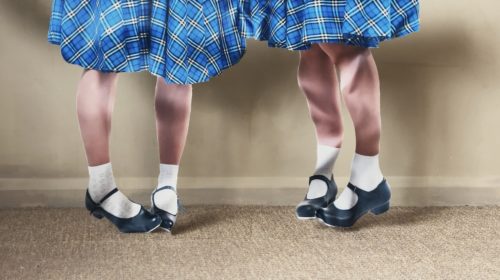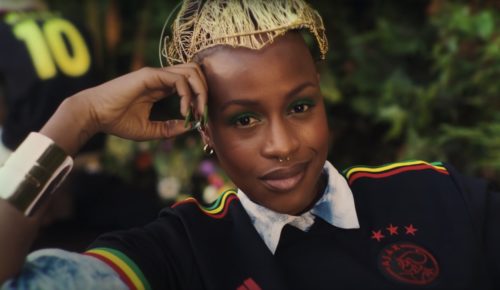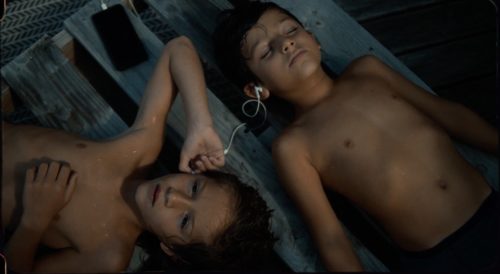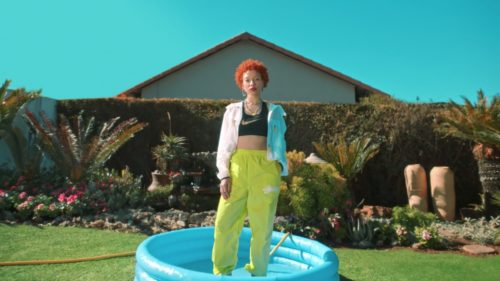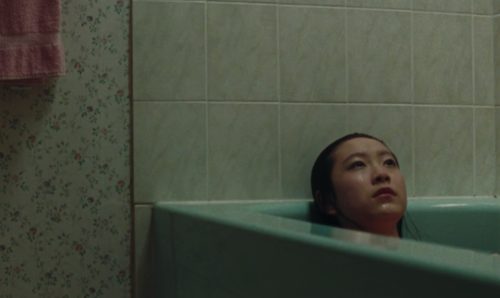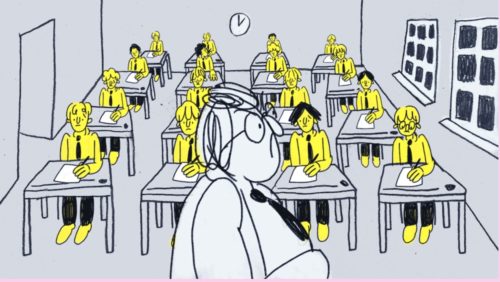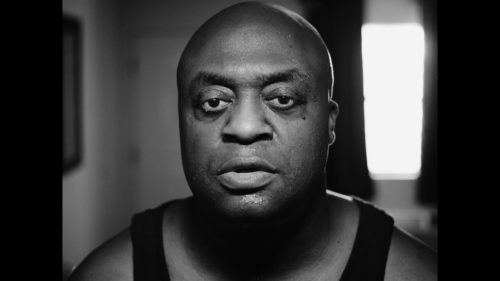Dylan Holmes Williams on set for Stilts
You studied art history and spent time as a songwriter and bass player in a band, as well as teaching yourself to edit. What led you into directing?
From ages fourteen to seventeen I was in a cute but sadly mediocre indie band called Pull In Emergency. Our music was rubbish, but we were very lucky to ride a brief and spluttering wave of so-called ‘underage’ bands, which featured the much more talented likes of Bombay Bicycle Club. We played Bestival and did a live session on Radio 1 – but released our debut album to deafening indifference. It sold fifty copies, most of which were purchased by my dad.
So we split up and I went off to university to study Art History. It was through a module on European Cinema that I discovered the likes of Lars von Trier, which then led me onto Lynn Ramsey and Gus Van Sant and David Lynch. And at that point, I did what any self-respecting teenager does when they’ve just seen Mulholland Drive: I bought a Canon 5D.
Me and my housemates started experimenting making crap short films. We’d write, shoot, edit and score them in a single evening. I still work – and live with – those same housemates, in London now, five years later. One of them is my composer Finn Keane (who is also a songwriter for the likes or Rita Ora and Charlie XCX, and an artist on the PC Music label under the moniker of EasyFun). He did all the music for The Devil’s Harmony and Stilts. He’s a complete genius.
You’ve described your style as ‘grounded supernaturalism’ – can you unpack that description a little more for us?
The Devil’s Harmony is about a bullied teenage girl who runs an a cappella club in a high school – fairly ordinary – but the a cappella club possess the power to sing people to death. Stilts is basically a family drama about leaving home – but everyone’s wearing ginormous metal stilts. I guess I like films that take you into a heightened world that feels like a slightly warped, uncanny reflection of reality.
For me, it’s a really precise sweet-spot. I’m not massively into straight fantasy or anything that feels gratuitously ‘crazy’. While it’s clearly a strange, heightened world, the stakes need to feel very real for the characters. And the story itself has to be told with a completely straight face.
You specialise in telling surreal stories in normal, relatable settings. Where do you find inspiration? The internet? Social media? Quirky news stories? Personal experience?
My ideas always come to me from totally random places. It’s a bit worrying, to be honest, because I have no tried-and-tested method for coming up with them. It’s quite possible I’ll never have a good one again.
For example, with The Devil’s Harmony, I was making a music video for an a cappella club at university and – as I watched the rushes on disorientating repeat during the edit – I realised how incredibly creepy they are. I got really excited by the idea of making a kind of twisted high school musical, leaning in to – and then subverting – all of the genre tropes of those films.
The idea for Stilts came to me when I had a friend over to visit the strange, antique-filled house that I used to semi-squat in. He brought a pair of huge metal stilts with him that he’d stolen from the back of a van. There was just something so unsettling about the image of this lanky guy, clambering, tarantula-esque, through the living room, his head smushed up against the ceiling. It felt like a strong starting point.
Your first short film, The Nightmare on Deskteeth Street, centres around the dastardly theft of a pair of ‘blood-red cowboy boots’ which are replaced by common clogs. The black comedy is really elevated by the performances of the actors playing the obsessive owner and the thief. How did you approach casting?
Our awesome French DOP Oliver Ford had charmed Guy Henry at a party. He kindly got in touch with him afterwards to ask him to play the part and, blessedly, he said yes. I guess the lesson is that it always helps to have charismatic Frenchmen on your crew. Guy is an astonishing actor. Likewise, Simon Kane, who portrays the soul-sucking horror of boot-loss – something that haunts my darkest nightmares – with exquisite style.
Artificial Pleasure, I’ll Make It Worth Your While
Stilts, the Channel 4-commissioned short for Random Acts, has a similarly bizarre premise, set in a dystopian future where people are forced to wear towering, cumbersome stilts, and amputation is a much sought-after procedure. Talk us through the idea behind the film. What were the biggest challenges, technically speaking, filming people on stilts? Were they trained professionals or regular actors?
Bizarrely, it was only after I’d cast the indomitable Tom Glynn-Carney that I discovered he’d had extensive stilt-training as a child. This is not a joke. So we were off to a good start.
His enthusiasm proved infectious. With the help of some brilliant stilt experts the rest of the cast were up in no time. By the end of the shoot, even the Steadicam operator insisted on wearing stilts to operate which, quite frankly, was really annoying. I had to get rid of all his shots in the edit.
How has your background in music/songwriter informed the sound design in your work? I’m thinking of the off-screen screaming over the closing credits of Stilts, for example; or the frenetic soundtrack to The Nightmare on Deskteeth Street…
Music always comes very early on when I’m thinking about stories. I get ideas for cues or melodies in my head and it somehow helps me sharpen the tone of the world I’m creating. I’m working on a new short idea now about two characters inside a twee French-language instructional video who develop autonomy and become erotically attracted to each other and I’m already sketching out music with Finn, my composer. We’re creating these warped Edith Piaf-era French ballads on the piano in our house. And they’ll help inform the mood of the script.
In terms of sound design, I work very closely with Factory Studios, who are absolutely brilliant. They have everything there – fantastic producers, facilities and a host of insanely talented sound designers, like Josh Campbell, who did The Devil’s Harmony and Stilts. I think, particularly when you’re working in horror, the possibilities for off-camera storytelling presented by sound design are really limitless. In the final scene of Stilts, I think there’s something more affective and horrific about the fact that you only hear – and don’t see – the daughter’s stilts getting removed by an angle-grinder. It leaves the rest to your morbid imagination.
As well as your short films, you’ve directed a string of promos including VOTD-winning I’ll Make It Worth Your While for Artificial Pleasure. The narratives for I’ll Make It Worth Your While and Banfi’s Never Really Cared fit uncannily with the lyrics, to the extent the characters are lip-syncing: what’s the creative process like for you? Do the lyrics inform and inspire the concept or do you already have the ideas and it’s a case of finding the right track?
The few times I’ve tried to retro-fit a pre-conceived idea to a track for a music video, it hasn’t worked. I know some directors have had great success with that approach, but my videos tend to have a narrative bent and so it always ends up feeling a bit forced. And yeah, I think there’s just something very satisfying about seeing characters lip-sync in a way that puts a new spin on the lyrics and ties into a broader story.
Your latest short film, The Devil’s Harmony, has been heavily garlanded on the festival circuit and is (hopefully) set for release soon. What else are you working on at the moment? Any plans to move into commercials?
I’ve just signed with Stink for commercials, which is incredibly exciting. Once this whole Covid-19 thing blows over, I’m really looking forward to shooting some sweet comedy ads with them.
On the long-form side, I’m in development with a few different production companies on two features in the UK and an original TV series in the US. One of the features is a feature-length version of The Devil’s Harmony, and the TV show is a kind of climate catastrophe dark comedy.
Interview by Selena Schleh
Dylan Holmes Williams is represented by Stink Rising
Director - Dylan Holmes Williams Writer(s) - Jess O'Kane, Dylan Holmes Williams Producer - Nathan Craig Co-producer - Anthony Toma
Starring Olivier-award 2019 Best Actress winner PATSY FERRAN (God's Own Country), LEO SUTER (Clique, Beecham House, Victoria), GUY HENRY (Star Wars: Rogue One, Harry Potter series) and BOBBY SCHOFIELD (Black Sea). ARTIFICIAL PLEASURE, I'LL MAKE IT WORTH YOUR WHILE Director - Dylan Holmes Williams Producer - Ailsa Vanessa Tapping Executive Producer - Ramin Sabi Director Of Photography - Oliver Ford Featuring Tiago Gambogi as The Patient Also featuring Emma D'Arcy, Marco Alessi, Nick Finerty, Yvonne Campbell & Artificial Pleasure as The Doctors Production Designer - Daisy Wormell 1AD - Femi Anderson 2AD - George Johnson 1AC - Emily-Jane Robinson 2AC - Cosima Barzini Gaffer - Esteban Gimpelewicz Make Up Artist - Grace Sinnott Choreography - Tiago Gambogi Choreography assistant - Margriet Kim Nguyen Editor - Dylan Johansson VFX / Compositing - Harry Davidson Sound Designer - Tom Jenkins @ Audium Post Colourist - Daniel De Vue @ Glassworks Storyboard Artist - Rupert Smissen THE NIGHTMARE ON DESKTEETH STREET Directed by Dylan Holmes Williams dylanholmeswilliams.com Starring Guy Henry, Simon Kane Written by Robbie Macinnes Producers - Ksenia Harwood, Ramin Sabi & Byron McNally Director Of Photography - Oliver Ford Production Designer - Daisy Wormell Editor - Gregory Hayes Composer - Tom Stafford Sound Designer - Tom Jenkins @ Audium Post Costume Designer - Lauren Miller Colourist - Joseph Bicknell @ Cheat Casting director - Liz Bichard 1AD - Marco Alessi 2AD - Alex Wood 3AD - Jackson Parker 1AC - Kate Eccarius 2AC - Alex Greene Steadicam Operator - Josh Brooks Art Director - Madeline Van Oss Sound Recordist - Tom Osborn Gaffer - Salvador Gomez-Lopez Best Boy - Charlie Lodge Make-Up Artist - Serena Grace Visual Effects - Harry Davidson The Vicar - Michael Ridgway Mourners - Yvonne Campbell, Kwesi Davies, Antonio Ambrocio-Sibayan